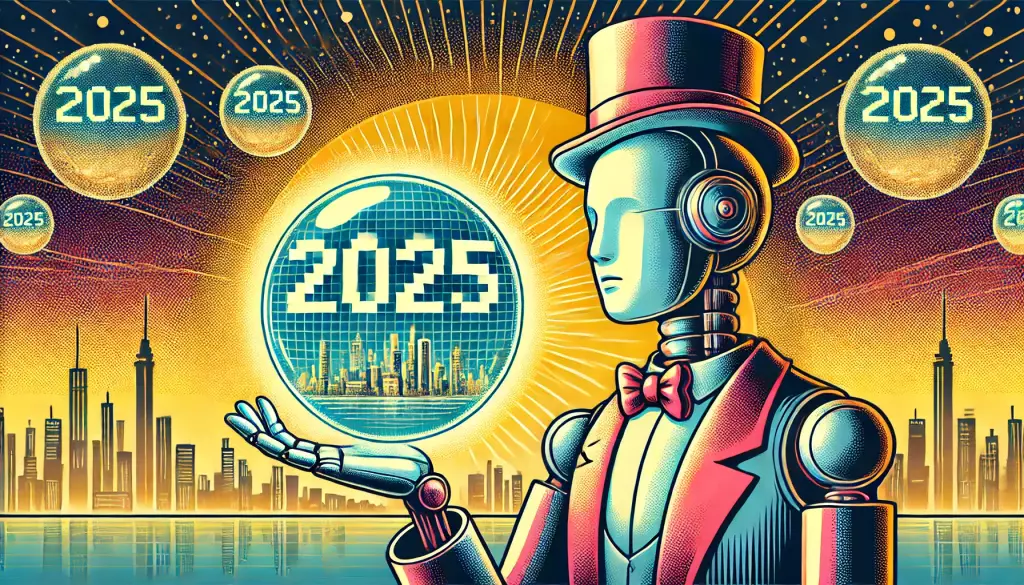The year 2024 has been significant for artificial intelligence (AI), marking a turning point in how the technology is commercialized and applied across various sectors. As the landscape of AI continues to evolve rapidly, we observe new breakthroughs that challenge conventional methods of interaction, enhance user capabilities, and empower businesses to innovate in unprecedented ways. This article delves into the salient developments in AI throughout 2024, highlighting the strides made by leading corporations and emerging startups, as well as the changing dynamics of AI technology.
A Growing Ecosystem of Language Models
2024 was characterized by an explosion in the deployment and enhancement of large language models (LLMs). The release of the new OpenAI models, such as the o1 reasoning series and its successor, the o3 model, exemplifies a trend towards greater sophistication and specificity in LLM capabilities. Unlike previous models, the o1 and o3 variants include mechanisms for deeper analysis and accurate responses, particularly in complex subjects like science and coding. Notably, OpenAI’s commitment to innovation remained strong as it prepared to roll out the o3 model in early 2025, signaling its intention to maintain its dominance amidst stiff competition.
This competitive atmosphere was not driven solely by OpenAI. Other tech giants and startups joined the fray with novel proposals and alternative architectures. Meta’s Llama series, which includes the ambitious Llama 3 and 3.1 models, raised the bar for open-source AI projects, showcasing immense scalability and reducing operational costs for businesses. Similarly, the successful launch of Amazon’s Bagua, an agile and adaptable AI tool, further diversifies the growing AI landscape, allowing companies to tailor AI to specific needs without extensive time or monetary investment.
One of the most noteworthy paradigms to emerge in 2024 is agentic AI, characterized by AI systems that can operate independently or with minimal human guidance. This paradigm shifts traditional interactions with AI from simple queries to proactive, intelligent engagement with complex problems. Companies, such as Salesforce with its Agentforce 2.0, introduced AI agents that can process intricate scenarios and generate actionable insights, significantly boosting enterprise productivity.
Additionally, SAP’s adaptation of its Joule chatbot into a robust AI agent demonstrated the transformative potential of AI in corporate settings. By employing open-source LLMs, SAP enhanced its offerings, streamlining workflows and fostering innovation. Google, too, pushed forward with its Project Astra, which incorporated real-time contextual responses to enhance productivity across various services. The implications are immense, as agentic AI stands primed to redefine workflows and operational efficiencies not only in enterprises but also in individual tasks.
Amidst all this growth and innovation, the competition among AI developers has intensified. Companies like Nvidia have ventured into the open-source arena with powerful models like Nemotron-70B, challenging established players and showcasing an expanded market for AI solutions. Additionally, the resurgence of Google’s Gemini series, initially met with skepticism, indicates a stark turnabout in perceptions. With new versions that dominate benchmark tests, Google is reclaiming its stature in AI discussions.
The introduction of features like streaming video analysis in Gemini 2.0 Flash points to the shifts toward multimodal interfaces that empower machines to understand and interact with the world similarly to humans. This kind of advancement enhances not only the user experience but also the potential applications of AI across various sectors, including education, media, and customer service.
Looking ahead to 2025, the trajectory of AI development suggests an all-encompassing integration into both business processes and consumer applications. With major players like OpenAI, Meta, and Google fully invested in AI image generators and LLMs, the landscape is set for widespread content generation and personalization. This push will enable streamlined workflows and new forms of engagement across industries.
As companies begin to deploy generative AI more broadly, we can expect significant shifts in how humans interact with technology. The advent of AI-powered robotics, previously a dream, is on the verge of reality in commercial and domestic spheres. Automation driven by AI not only stands to increase efficiency but would also alter the very fabric of human-robot interactions, leading to collaborative environments that blend human intuition with machine efficiency.
2024 has solidified a robust foundation for future AI advancements, characterized by intense competition, collaborative innovations, and the transformative potential of agentic AI. As we move forward, the interplay between human ingenuity and technological capabilities will undoubtedly shape the businesses and lives of the future. The upcoming years promise exciting developments, and we eagerly anticipate how AI will further revolutionize our world.

